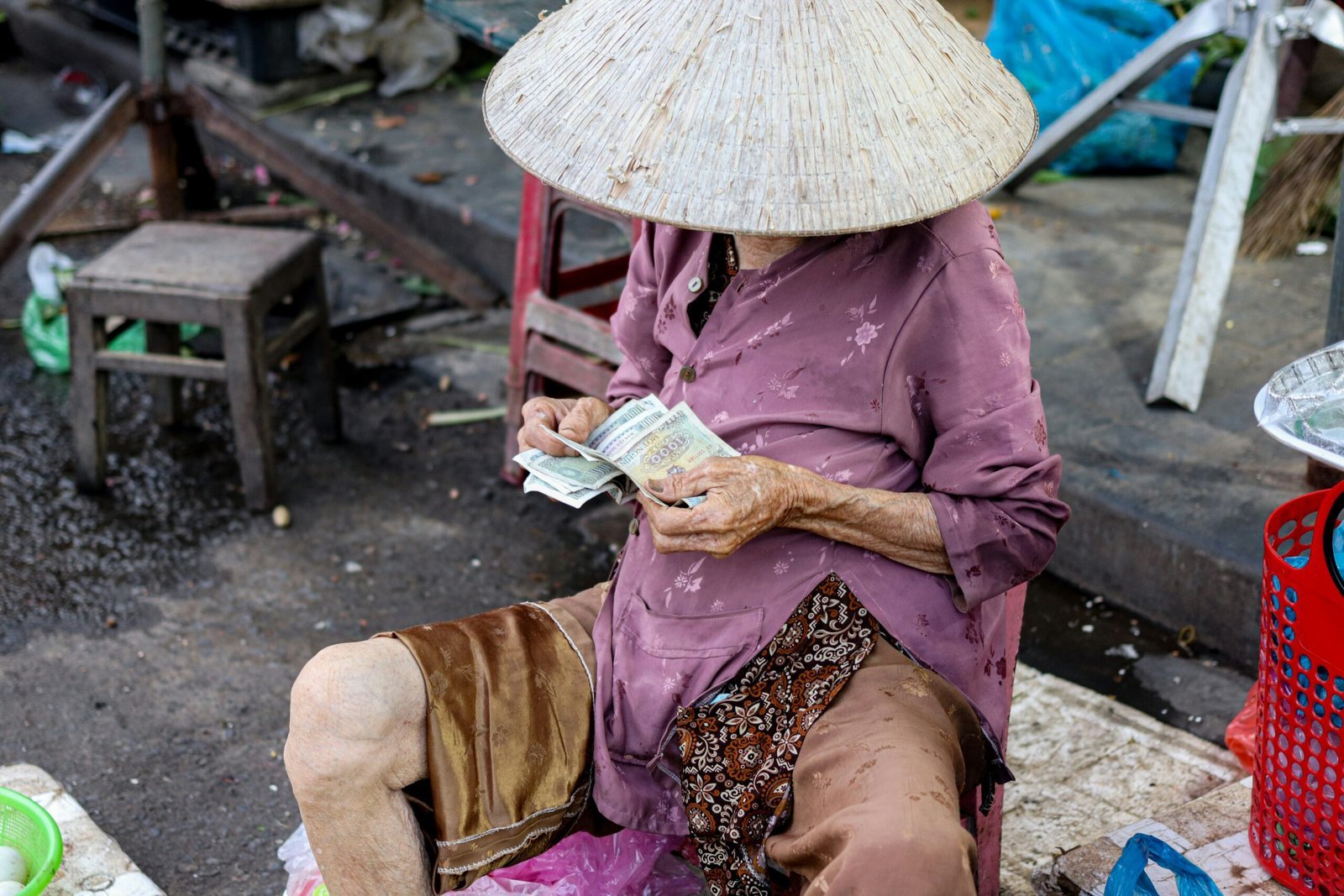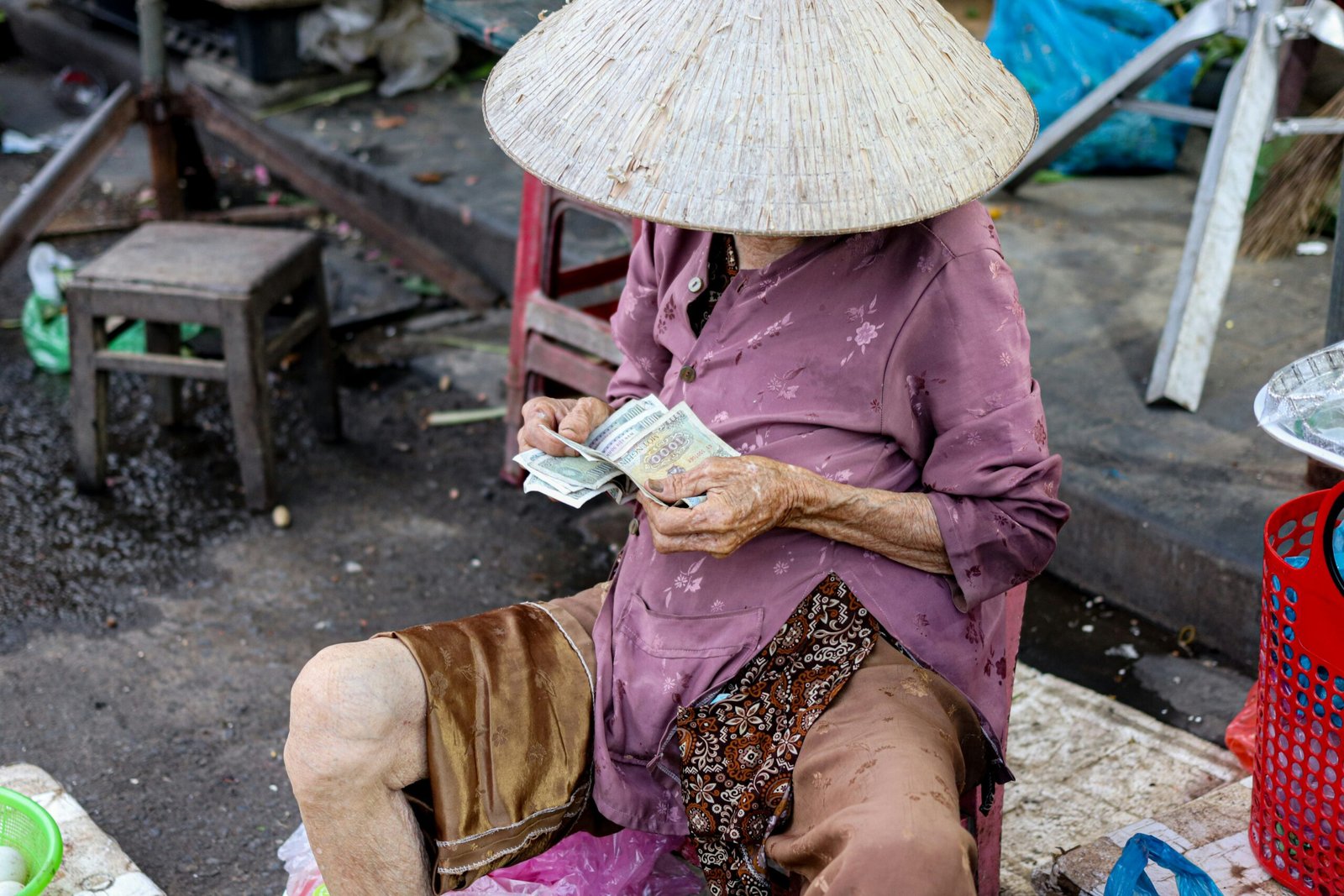
Introduction to Traditional Markets
Traditional markets have long been a pivotal aspect of cultural expression, economic activity, and social interaction across the globe. These vibrant marketplaces serve as vital centers where local artisans, farmers, and vendors converge to sell their goods, ranging from exquisite handicrafts to fresh produce. The significance of traditional markets is multifaceted, as they not only foster local economies but also preserve cultural heritage and promote sustainable practices.
In many cultures, traditional markets are not merely places for the exchange of goods; they embody the spirit and identity of a community. They facilitate the passing down of craftsmanship and culinary traditions, allowing visitors and locals alike to engage with the rich tapestry of customs and practices that define a region. These markets often showcase the unique skills and artistry of local craftsmen, whose handmade products reflect the cultural narratives of their heritage. From intricately woven textiles to hand-carved wooden artifacts, the diversity of handicrafts found in traditional markets tells a compelling story of artistic expression and cultural pride.
Moreover, traditional markets provide a sensory feast, offering a variety of local foods that intimately connect visitors to the culinary practices of a community. The smells of spices, the colors of fresh fruits and vegetables, and the sounds of vendors beckoning customers all contribute to the immersive experience that traditional markets provide. This not only supports the local economy by promoting small-scale farmers and producers but also encourages sustainable consumption by connecting consumers directly with the source of their food.
As we delve deeper into the exploration of traditional markets, it becomes evident that these spaces are emblematic of community resilience and cultural continuity. Their unique offerings not only enrich the local economy but also create shared experiences that foster a deeper appreciation of cultural diversity.
The Rich Heritage of Handicrafts
Traditional markets are often bustling centers of activity, where the rich heritage of handicrafts comes to life. These markets showcase a diverse range of handmade products that reflect both the cultural identity of the region and the skills passed down through generations. Artisans, often equipped with a profound knowledge of their craft, utilize various techniques and materials that are integral to the process of creating these unique items.
Handicrafts encompass a wide array of items, including textiles, pottery, woodwork, and jewelry, each crafted using local resources and traditional methods. For instance, artisans may engage in intricate weaving techniques to produce textiles that tell stories of their culture. The vibrant colors and patterns are not just visually appealing; they carry meanings and histories that resonate deeply within the community. Similarly, in pottery, local clay is molded into both functional and decorative pieces, illustrating the unique artistic expressions of the artisans and their connection to the land.
The cultural significance of these handicrafts is paramount; they serve as a lasting reminder of local traditions and practices. Each item has its own story, often reflecting the challenges and triumphs of the community. By purchasing handicrafts from these markets, consumers are not merely acquiring products but are participating in the preservation of cultural heritage. This practice supports local economies and provides artisans with a means to sustain their craft, ensuring that their skills are not lost to future generations.
Therefore, exploring the handicrafts in traditional markets allows one to appreciate the intricate combination of art and culture. Engaging with artisans provides insight into their techniques and the narratives behind their work, fostering a deeper understanding of the local customs and the significance of these handcrafted treasures.
Understanding Local Foods and Their Origins
Local foods play a pivotal role in the cultural landscape of traditional markets, often serving as a reflection of history, geography, and community. Each region is characterized by its unique ingredients and culinary practices, resulting in a diverse tapestry of flavors and dishes. The origins of these local foods can often be traced back to the agricultural practices, climatic conditions, and historical influences that have shaped the area over time.
In traditional markets, one can find an array of local ingredients that form the backbone of regional cuisines. For instance, in coastal communities, fresh seafood is a staple, while in mountainous regions, hearty root vegetables and grains are more predominant. These ingredients not only nourish the body but also embody the lifestyle of the people who cultivate and consume them. The connection between food and the land is evident in how local foods are often sourced from nearby farms and fisheries, emphasizing a farm-to-table approach that retains the freshness and quality of the produce.
Traditional cooking methods further enhance the experience of local foods. Techniques passed down through generations, such as slow cooking, fermentation, or smoking, allow for the development of distinctive flavors that cannot be replicated. These methods are often tied to cultural rituals and communal gatherings, highlighting the social aspects of dining. For instance, sharing a meal made with locally sourced ingredients can serve as a bonding experience, strengthening community ties.
Understanding the origins of local foods in traditional markets goes beyond mere consumption; it invites a deeper appreciation of the stories and traditions that shape the culinary landscape. Each dish tells a story of the people, their ancestry, and their relationship with the local environment. By exploring these foods, one gains insights into the essence of the culture they represent, making the experience not just a meal, but a journey through history and heritage.
Navigating Traditional Markets: Tips and Tricks
Navigating traditional markets can be a captivating yet overwhelming experience for many, especially for first-time visitors. To ensure an enjoyable and immersive market experience, several practical tips and tricks can aid in making the most of this vibrant environment. One of the most crucial skills to develop is the art of bargaining. Negotiation is often a common practice in many traditional markets, and engaging in this cultural exchange can enhance your overall experience. Start by asking for the price and then offer a counter-price that is lower. This can initiate a friendly back-and-forth that not only potentially saves you money but also builds rapport with local vendors.
Respecting local customs is equally important when navigating traditional markets. Familiarize yourself with the specific etiquettes that may vary from one culture to another. For instance, observing appropriate greetings, maintaining a polite tone, and showing appreciation for the local craftsmanship can greatly influence interactions with sellers. Additionally, understanding the local market dynamics can provide context for why products are priced as they are, which can aid in negotiations.
Language can also pose a barrier in traditional markets, especially when visiting countries with different primary languages. Basic phrases in the local language can go a long way; even simple greetings or expressions of gratitude can demonstrate respect and earn goodwill from sellers. Furthermore, utilizing translation apps can be helpful for more complex interactions.
Lastly, prioritizing safety during your market visit is paramount. Keep your belongings secure and remain aware of your surroundings to avoid potential theft. Traveling in pairs or groups can also enhance safety while providing shared experiences that enrich your understanding of the local market culture.
Support Local Artisans: The Importance of Fair Trade
Supporting local artisans through fair trade practices is crucial for fostering economic stability and cultural preservation within communities. Fair trade is a movement that aims to create equitable trading partnerships, ensuring that artisans receive a fair price for their work while promoting sustainable practices. By purchasing handicrafts and local foods from traditional markets, consumers can contribute to the livelihoods of these skilled artisans, enabling them to thrive in a competitive global market.
Local artisans often come from regions where traditional crafts are a significant part of the cultural identity and heritage. By supporting these artisans through fair trade, we are helping to maintain these cultural practices, which might otherwise disappear in the face of globalization. Handicrafts created by local artisans often carry unique stories and traditions, providing deeper insights into the culture from which they originate. As we invest in these handmade products, we actively participate in the preservation of cultural diversity.
Additionally, supporting local artisans stimulates local economies. When consumers buy handicrafts and local foods, they directly inject funds into the community, fostering job creation and enabling artisans to reinvest in their craft. These positive economic impacts extend beyond the artisans themselves, as their success can lead to broader community development, including improvements in education and healthcare access. The fair trade model encourages a cycle of support that uplifts entire communities, rather than allowing wealth to concentrate in the hands of a few.
Furthermore, by engaging with traditional markets and prioritizing fair trade products, consumers are making informed choices that reflect their values. Ethical consumption can drive demand for sustainable practices and encourage artisans to innovate while still adhering to traditional methods. Through mindful purchasing, we contribute to a more just and equitable system that celebrates creativity and cultural heritage.
Culinary Adventures: Must-Try Dishes
Exploring traditional markets is not only about browsing through handicrafts but also encompasses the delightful discovery of local foods. These markets serve as vibrant hubs where culinary traditions come alive, offering a plethora of must-try dishes that reflect regional cultures and flavors. One such dish is street tacos, commonly found in markets across Mexico. Made with corn tortillas, these tacos are typically filled with various fillings such as marinated meats, fresh vegetables, and topped with salsa. The preparation often involves grilling or slow-cooking the meat, enhancing its flavor, while the accompaniments bring freshness and vibrancy to the dish.
Another staple is the beloved momo, a traditional dumpling originating from Nepal and Tibet. Momos are usually stuffed with minced meat or vegetables and seasonings, then steamed or fried to perfection. They often evoke communal dining experiences, where friends and families gather to prepare and enjoy these delectable bites during festivals and holidays. Vendors in traditional markets typically serve momos with a side of spicy dipping sauce, adding an exciting layer of flavor.
In Southeast Asia, satay is a must-try dish that reflects the region’s rich culinary heritage. These skewered and grilled meats, marinated in a mix of spices and served with a peanut sauce, are popular for both taste and cultural significance. Street vendors often prepare satay in engaging displays, attracting customers with the aroma of grilling meat. The dish serves as a symbol of celebration and togetherness, making it a staple at family gatherings and festivals.
Lastly, we cannot overlook the delightful sweet treats that traditional markets boast, such as baklava in the Middle East. Comprising layers of filo pastry filled with chopped nuts and sweetened with honey, baklava is not only a delectable dessert but also carries cultural weight, often served during special occasions and festive gatherings. These culinary treasures, from savory dishes to irresistible sweets, present a window into the heart of local culture and community traditions, inviting everyone to indulge in rich, flavorful experiences.
The Role of Traditional Markets in Cultural Exchange
Traditional markets serve as vital conduits for cultural exchange, bridging the gap between locals and visitors from various backgrounds. These vibrant venues showcase a rich tapestry of customs, offering insights into local traditions, craftsmanship, and cuisine. As people engage with vendors and fellow shoppers, they participate in an informal education that transcends language and geography, creating a platform for dialogue and understanding.
For instance, a traditional market in Morocco may feature artisans selling intricate rugs, pottery, and metalwork. Visitors are often drawn to the craftsmanship and may engage the artisans in conversation about their techniques and the cultural significance of their creations. This interaction not only allows tourists to appreciate the artistry but also enables artisans to share stories of their heritage. Such exchanges foster connections that often lead to a greater appreciation of one another’s backgrounds.
Similarly, farmers’ markets around the world present opportunities for cultural immersion through food. Vendors selling locally sourced produce, spices, and street food invite visitors to taste and experience authentic flavors that define the region’s culinary identity. The act of cooking and sharing meals plays a crucial role in cultural exchanges, as people come together to learn about varied preparation methods, ingredients, and the historical context surrounding specific dishes. Through these shared experiences, traditional markets cultivate a spirit of unity that celebrates diversity.
Moreover, traditional markets frequently host cultural events, workshops, and performances, further enhancing their role as melting pots of ideas and practices. These activities encourage participation from both locals and tourists, prompting mutual exchanges that deepen cultural understanding. Overall, traditional markets not only provide economic opportunities but also serve as essential spaces for fostering cultural connections and enriching the community experience.
Challenges Facing Traditional Markets Today
Traditional markets have long been a vital part of cultural heritage and community life. However, in recent years, they have encountered various challenges that threaten their existence and relevance in contemporary society. One of the primary issues facing traditional markets is modernization. As urban areas evolve, the demand for convenience and efficiency has led consumers to favor new shopping experiences, such as supermarkets and online marketplaces. This shift often results in a decline in foot traffic at traditional markets, as shoppers gravitate towards the allure of a one-stop shopping environment.
Competition from supermarkets, which typically offer lower prices and better accessibility, further exacerbates the issues traditional markets face. Supermarkets can leverage economies of scale, allowing them to stock a vast array of products while keeping costs low. This is particularly disadvantageous for small vendors operating within traditional markets, whose ability to lower prices is often limited by their overhead costs. As such, many vendors find it increasingly difficult to attract customers, leading to a decrease in sales and, subsequently, profitability.
Additionally, the impact of tourism can pose both a blessing and a curse for traditional markets. While tourists may be drawn to these markets for their authentic experiences, the influx can sometimes lead to commercialization, which alters the local character and diminishes the genuine atmosphere that initially attracted visitors. In this environment, traditional markets must navigate the fine line between capitalizing on tourist interest and preserving their cultural integrity.
To adapt and thrive, traditional markets need to evolve and innovate. Emphasizing the unique selling points of local handicrafts and foods can create a niche appeal that sets them apart from larger retailers. By fostering community engagement, incorporating sustainable practices, and enhancing their online presence, traditional markets can address these challenges and ensure their place in the modern marketplace.
Conclusion: Embracing the Experience of Traditional Markets
Traditional markets are vibrant spaces that offer more than just a shopping experience; they are alive with culture, history, and community spirit. Throughout our exploration, we have seen how these markets serve as hubs where artisans display their handicrafts, and local vendors provide access to fresh produce and unique culinary delights. Each visit to a traditional market allows one to witness firsthand the rich tapestry of local traditions and practices, revealing the essence of the community it represents.
By immersing oneself in the atmosphere of a traditional market, visitors can gain insight into the daily lives of the local populace, fostering an appreciation for craftsmanship and culinary arts. The stalls overflowing with handmade goods, from textiles to pottery, reflect the creativity and skills passed down through generations. Food lovers are particularly drawn to these markets as they present opportunities to savor authentic local dishes that may not be found in standard dining establishments. The experience is not merely about food; it is a celebration of local flavors and culinary techniques that define a region’s identity.
To truly embrace the experience of traditional markets, one must approach them with an open heart and a spirit of curiosity. Engaging with vendors and artisans enhances the experience, allowing for personal connections and learning about the stories behind each product. Whether it’s sampling street food, bargaining for handicrafts, or simply soaking in the vibrant atmosphere, visiting these markets can be a profound and enriching adventure. Therefore, as you set out to explore these unique marketplaces, remember to savor each moment, interact with the community, and celebrate the diverse experiences they uniquely offer. Traditional markets not only reflect the economic health of a community but also serve as living museums of culture and tradition.

